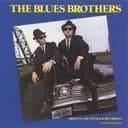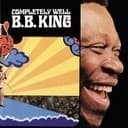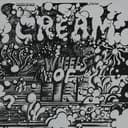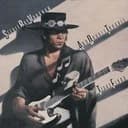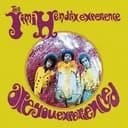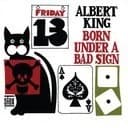The B♭ Blues Scale occupies a central position in jazz and blues history, partly because B♭ became the standard key for many wind instruments developed in the 19th century. When tenor saxophones, trumpets, and clarinets—all B♭ instruments—read concert B♭, they're playing in their most comfortable range, which explains why countless jazz standards and blues compositions are written in this key. The "blue note" in this scale—the ♭5 (E natural)—sits between E♭ (the perfect 4th) and F (the perfect 5th), creating that characteristic pitch ambiguity that blues musicians exploit through bending, sliding, and microtonal inflections. This tritone interval (B♭ to E) generates harmonic tension that resolves beautifully to either adjacent note, giving blues melodies their emotional depth. In practice, blues horn players and guitarists treat this note as a target for expressive techniques—it's not just played straight but bent, approached from above or below, and sustained with vibrato to capture the vocal quality inherent to blues tradition. The scale's African-American origins in the Mississippi Delta and urban centers like Chicago and Memphis shaped modern popular music, with B♭ blues serving as the foundation for countless jazz improvisations, rhythm and blues recordings, and rock and roll classics.
How to Use the B♭ Blues Scale
The B♭ Blues Scale is remarkably versatile for improvisation over blues progressions, particularly the standard 12-bar blues in B♭ (B♭7-E♭7-B♭7-F7-E♭7-B♭7). One of the blues scale's greatest advantages is its "one size fits all" quality—you can play these six notes over all three chords (I7, IV7, V7) without clashing, making it ideal for beginners learning to improvise. When soloing, give special attention to the blue note (E natural), approaching it chromatically from E♭ or F and resolving with intention to create authentic blues phrasing. Rhythmic placement matters as much as note choice in blues: emphasize syncopation, triplet feels, and call-and-response patterns to develop vocabulary that swings and grooves. For jazz contexts, the B♭ blues scale works excellently over dominant seventh chords and can be combined with the B♭ Minor Pentatonic or B♭ Dorian mode to add harmonic color and sophistication. Horn players should focus on articulation—using ghosted notes, falls, and scoops—while guitarists can employ string bending to approximate the vocal quality of blues expression. Practice the scale in different octaves and explore connecting patterns across the instrument's range.
Blues Scale in Jazz and Traditional Blues
In jazz, the B♭ Blues Scale serves as fundamental vocabulary for bebop, hard bop, and soul jazz improvisation. Jazz giants like Charlie Parker, Dizzy Gillespie, and Cannonball Adderley built sophisticated solos incorporating blues scale passages over B♭ blues progressions and ii-V-I changes. The scale's compatibility with B♭ instruments means that horn sections in big bands and small combos naturally gravitate toward this key, making it essential repertoire for any jazz musician. Traditional blues singers and guitarists from the Delta and Chicago traditions—including Muddy Waters, Howlin' Wolf, and B.B. King—used B♭ blues extensively, often tuning guitars down or using capos to access this key's darker, more resonant character. The scale works beautifully over extended blues forms beyond the standard 12-bar structure, including 8-bar blues, 16-bar forms, and minor blues variations. When playing over a B♭ minor blues (using B♭m7 and E♭m7 chords instead of dominant sevenths), the blues scale still functions perfectly, highlighting its harmonic flexibility. Contemporary blues-rock artists continue to favor B♭ for its powerful, driving quality—the key sits in a range where guitar power chords sound massive and vocals can belt with authority.
Characteristic Licks and Patterns
Developing authentic blues vocabulary in B♭ requires learning classic licks and melodic patterns that define the tradition. Start with simple motifs: play B♭-D♭-E♭, then add the blue note (E) as a chromatic passing tone between E♭ and F. Try descending patterns from the octave (B♭) down through A♭-F-E-E♭-D♭, emphasizing the chromatic movement around the blue note. Practice "question and answer" phrases where you play an ascending line (B♭-D♭-E♭-E-F) followed by a descending response. Incorporate rhythmic variations: swing eighth notes, triplet runs, and blues shuffle feels transform simple scale patterns into musical statements. For guitarists, combine scale patterns with string bending—play E♭ and bend it up to E (the blue note), or bend E up toward F for that signature blues cry. Horn players should work on articulation patterns: slurred legato phrases contrasted with staccato punches, grace notes approaching the blue note, and terminal vibrato on sustained tones. Study classic recordings in B♭ blues to internalize these patterns: listen to how masters like John Coltrane ("Blues to Bechet") or Ray Charles use the blues scale to construct compelling, memorable solos that balance simplicity with emotional impact.
Register Your Account
Ready to master the B♭ Blues Scale and expand your improvisation skills? Create your free Piano Owl account to access interactive scale practice tools, track your progress across different keys, and explore comprehensive lessons on blues technique and theory. Our platform provides fingering guides, backing tracks in B♭ blues, and exercises designed to develop authentic blues vocabulary. Join thousands of musicians improving their skills with structured practice routines and expert guidance tailored to your experience level.
